Museum day
Today Blue Tea is going on a field trip. We have eleven museums on the itinerary, so grab your bag lunch, portable music device, and a sweater, find a seat, and we'll be off.
Our first stop is The Zymoglyphic Museum, "The world's only repository for the study and display of Zymoglyphic art, artifacts, and natural history." That's zy'-mo-glyph'-ic, adj. [Gr. zyme leaven + Gr. glyphe carving]
1. Of, or pertaining to, images of fermentation, specifically the solid residue of creative fermentation on natural objects. 2. The collection and arrangement of objects, primarily either natural or weathered by natural forces, for poetic effect. It's a real collection of objects housed in San Mateo, available for viewing only during special events or by appointment. Recently acquired by annex-happy Incognita Nom de Plume, curator of the excellent Museum of Dust, The Zymoglyphic Museum is a treaurehouse of works exploring the collaboration between the artist and nature, and also includes a Curiosity Cabinet of collected objects. The curator also keeps a worthwhile blog.
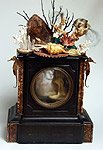
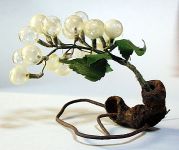

While we're at it, let's save on the admission fare and visit another of the Museum of Dust's subsidiaries: Wunderkammer, a Flickr photo pool maintained by Incognita Nom de Plume. It's a vast assemblage of user-uploaded images of curiosity artifacts from all around the world.
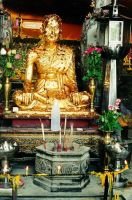
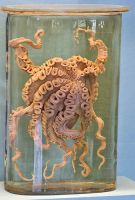


And while we're here, we can spare some time to peruse another great Flickr photoset: an exhibit of Magical Cards from Germany.
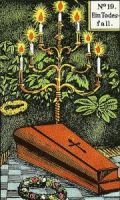

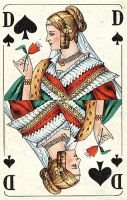
Our next stop is to Gensou Hyouhon Hakubutsukan, which I'm told translates to the Museum of Fantastic Specimens. Nine exhibition rooms on three floors of carefully preserved examples of dragons, frogs, crabs, demons, fish, and other aquatic and terrestrial fantastica. Don't miss the gallery of woodblock prints on the first floor, the fossilized remains in the Underground Sphere room on the second floor, or the Seven Deadly Sins exhibit on the third. If reading signs in Japanese isn't your thing, your visit might be greatly facilitated by the insertion of a Babel Fish in your ear before proceeding. (Copy URL first: http://sow.ggnet.co.jp/ )
Via the nonist.
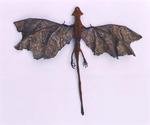
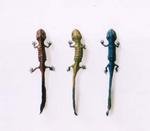

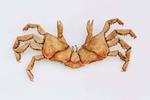
Cornell has a delightful online exhibit of The Fantastic in Art and Fiction. With categories like Danse Macabre, Weird Science, Possession & Insanity, and Freaks, Monsters & Prodigies, how could you go wrong?
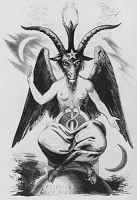

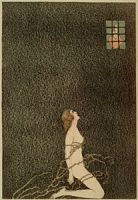
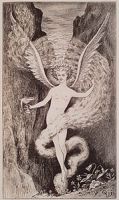
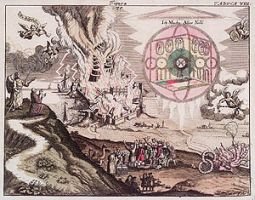
And now we come to The Museum of Scientifically Accurate Fabric Brain Art. Yes, that's right. With a collection comprising a grand total of three quilts and a 3-d knit sculpture, all scientifically accurate and all representing brains, that would make this "the world's largest collection of anatomically correct fabric art, inspired by research from neuroscience and dissection." It makes for a short stop, but hey, it's pretty awesome.
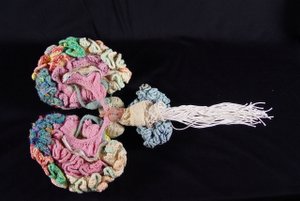
Next up is MOBA, The Museum of Bad Art. "Art Too Bad To Be Ignored." This is a collection of artworks so hideous that they just have to be shown off. The work displayed below, "Lucy In the Field With Flowers", was the first piece acquired by the museum and the catalyst for the whole collection. Impressive, no?
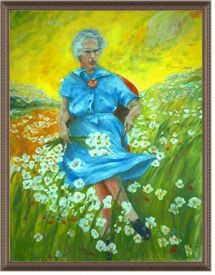
Our next stop is Surnatéum, Le Muséum d'Histoire Surnaturelle. The exhibits are presented in your choice of French or English. The Museum of Supernatural History is a massive collection of fantastic and occult objects, including such departments as Haunted Antiques, Forgotten Knowledge and Cursed Books, Cryptozoology and Teratolgy, and Prophecies and Apocalypses. In addition to the objects themselves, the exhibits are extensively narrated and annotated. The only real drawback is the difficulty of navigating and accessing the images, which are, when you see them, fascinating. To make up for this, I'll post an extra-large selection of images.
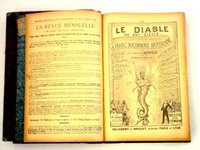

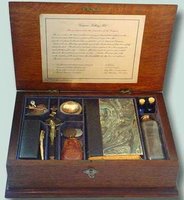
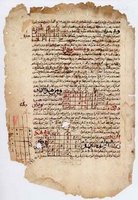
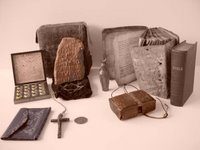
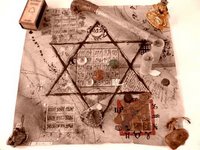
Johann Dieter Wassmann is a wonderful and engrossing artist I'm ashamed never to have heard of before discovering The Wassmann Foundation, located in Washington. D.C. I adore his boxed works, assmblages of objects, drawings, text, paintings, and diagrams placed inside compartmentalized wooden frames. They're unusual, meticulous, and beautiful, a graceful blend of science, art, craft, and poem.
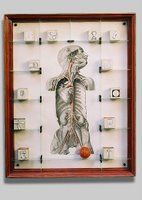

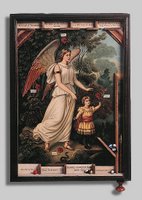

The Dime Museum Virtual Gallery is all that remains of what was once one of the last dime museums. Now there's just the slideshow.

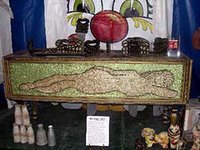
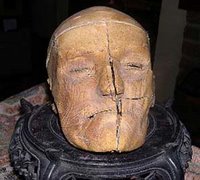
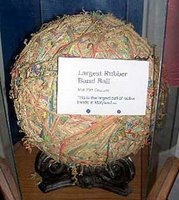
And that is our last stop for the day. Hope you enjoyed the trip. You want more? On the way home we can drop you off at The Museum of Online Museums, where there's enough to keep you busy for quite some time.
Our first stop is The Zymoglyphic Museum, "The world's only repository for the study and display of Zymoglyphic art, artifacts, and natural history." That's zy'-mo-glyph'-ic, adj. [Gr. zyme leaven + Gr. glyphe carving]
1. Of, or pertaining to, images of fermentation, specifically the solid residue of creative fermentation on natural objects. 2. The collection and arrangement of objects, primarily either natural or weathered by natural forces, for poetic effect. It's a real collection of objects housed in San Mateo, available for viewing only during special events or by appointment. Recently acquired by annex-happy Incognita Nom de Plume, curator of the excellent Museum of Dust, The Zymoglyphic Museum is a treaurehouse of works exploring the collaboration between the artist and nature, and also includes a Curiosity Cabinet of collected objects. The curator also keeps a worthwhile blog.



While we're at it, let's save on the admission fare and visit another of the Museum of Dust's subsidiaries: Wunderkammer, a Flickr photo pool maintained by Incognita Nom de Plume. It's a vast assemblage of user-uploaded images of curiosity artifacts from all around the world.




And while we're here, we can spare some time to peruse another great Flickr photoset: an exhibit of Magical Cards from Germany.



Our next stop is to Gensou Hyouhon Hakubutsukan, which I'm told translates to the Museum of Fantastic Specimens. Nine exhibition rooms on three floors of carefully preserved examples of dragons, frogs, crabs, demons, fish, and other aquatic and terrestrial fantastica. Don't miss the gallery of woodblock prints on the first floor, the fossilized remains in the Underground Sphere room on the second floor, or the Seven Deadly Sins exhibit on the third. If reading signs in Japanese isn't your thing, your visit might be greatly facilitated by the insertion of a Babel Fish in your ear before proceeding. (Copy URL first: http://sow.ggnet.co.jp/ )
Via the nonist.




Cornell has a delightful online exhibit of The Fantastic in Art and Fiction. With categories like Danse Macabre, Weird Science, Possession & Insanity, and Freaks, Monsters & Prodigies, how could you go wrong?





And now we come to The Museum of Scientifically Accurate Fabric Brain Art. Yes, that's right. With a collection comprising a grand total of three quilts and a 3-d knit sculpture, all scientifically accurate and all representing brains, that would make this "the world's largest collection of anatomically correct fabric art, inspired by research from neuroscience and dissection." It makes for a short stop, but hey, it's pretty awesome.

Next up is MOBA, The Museum of Bad Art. "Art Too Bad To Be Ignored." This is a collection of artworks so hideous that they just have to be shown off. The work displayed below, "Lucy In the Field With Flowers", was the first piece acquired by the museum and the catalyst for the whole collection. Impressive, no?

Our next stop is Surnatéum, Le Muséum d'Histoire Surnaturelle. The exhibits are presented in your choice of French or English. The Museum of Supernatural History is a massive collection of fantastic and occult objects, including such departments as Haunted Antiques, Forgotten Knowledge and Cursed Books, Cryptozoology and Teratolgy, and Prophecies and Apocalypses. In addition to the objects themselves, the exhibits are extensively narrated and annotated. The only real drawback is the difficulty of navigating and accessing the images, which are, when you see them, fascinating. To make up for this, I'll post an extra-large selection of images.






Johann Dieter Wassmann is a wonderful and engrossing artist I'm ashamed never to have heard of before discovering The Wassmann Foundation, located in Washington. D.C. I adore his boxed works, assmblages of objects, drawings, text, paintings, and diagrams placed inside compartmentalized wooden frames. They're unusual, meticulous, and beautiful, a graceful blend of science, art, craft, and poem.




The Dime Museum Virtual Gallery is all that remains of what was once one of the last dime museums. Now there's just the slideshow.




And that is our last stop for the day. Hope you enjoyed the trip. You want more? On the way home we can drop you off at The Museum of Online Museums, where there's enough to keep you busy for quite some time.
Labels: art, assemblage, collections, curiosities, ephemera, museums


7 Comments:
Excellent post! I love the Fantastic library!
Thanks -- wonderful entry.
What a fantastic round up (and not just because we made it in there!). MoD will be acquiring some of those wonderful collections ourselves -- esp. since the last time we saw the Wassmann Inst. was in an observatory in Australia (I was wondering where Jeff had got to). And if you liked the brain art you'll also enjoy another Australian's US adventures -- this one with crochet -- The Institute For Figuring includes a woolen hyperbolic reef as well as numerour crocheted hyperbolic figures... http://museumofdust.blogspot.com/2006/06/wunderkammer-hyperbolic-figures-on-hit.html for our acquisition or http://www.theiff.org/
oops sorry -- I meant to link those urls
MoD's Hyperbolic exhibit
The Institute for Figuring
Love your Fantastic Findings!
Fabulous walk-through. I could spend hours pouring over these sites. And I want 'Le Chapeau de Ghédé' (Chapeau de Baron Samedi) for myself, it's splendid. Oh why can't the interesting museums have gift shops.
These are indeed fantastic!
Post a Comment
<< Home